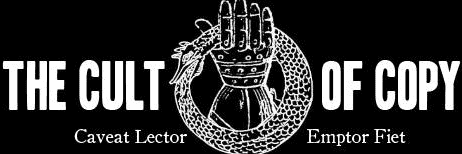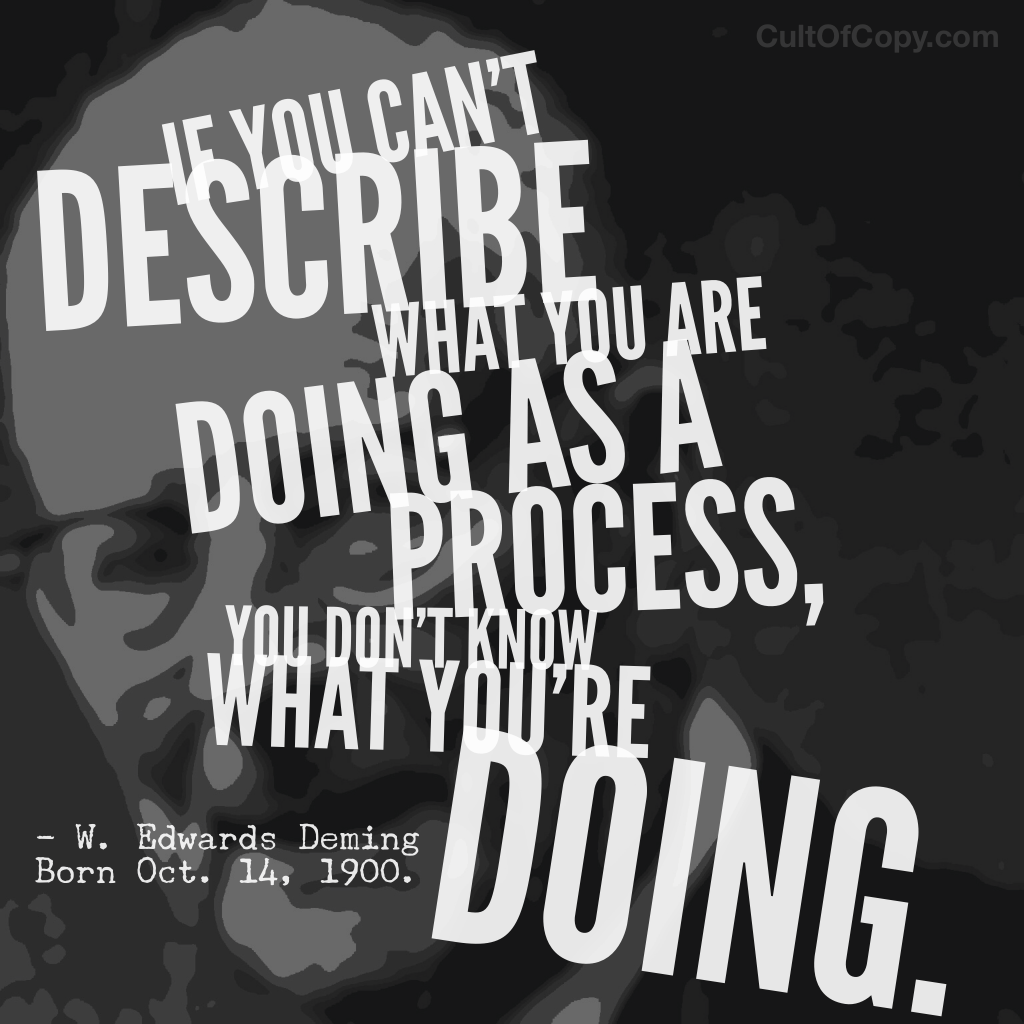“If you can't describe what you are doing as a process, you don't know what you're doing.” – W. Edwards Deming, Born Oct. 14, 1900.
A lot of people who get into copywriting mistake it for other kinds of creative writing. They believe it is all art, and invention, and creative genius.
And hey, work that involves that kind of magic can be great. But not even the most talented men and women who ever lived could put out masterpiece after masterpiece.
And yet, we still have to work. We still have to sell to earn. Our clients must still be able to get results from our work, even when the muse doesn’t strike.
Don’t worry, little ones.
I have something that acts as an insurance policy against the fear of writer’s block.
Never again worry about having to cross a creative desert, devoid of ideas, as empty as the page or screen staring you in your stressed out face, while the deadline looms overhead like a guillotine’s blade, hanging by a thread as frazzled as your nerves.
It’s this: process.
Every time you do something for a client that proves effective, turn it into a well-defined process.
A template. Break it down step by step.
Ideally, you break it down to the degree that someone else could follow that process and recreate something approaching your own result.
Nailing down the PROCESS behind the activity does a large number of very valuable things for you.
1. It makes the project easier to repeat. The next time you need to do that kind of project, you aren’t starting from zero. You’re building a variation of work you already successfully leveraged.
2. It helps you understand your own workflow better. When you get everything broken down into steps, you can find gaps, or inefficiencies to fix. You can find opportunities for improvement or expansion. Way easier than you could if you always wing it.
3. Speed and efficiency increase. You get faster at completing that process. Time is always money. Either you make the same amount in less time, freeing you up to play video games like me. Or you free up more time to add another project and increase the bottom line.
4. Knowing your process specifically makes it easier to sell. When you discuss projects with clients, you’re not giving them vagaries and voodoo as an understanding of what you do for them. Instead, you can give them a detailed breakdown of what’s involved in what is, to them, mysterious work. Understanding = conversion.
5. These processes allow you to not only create new work, but you can use them to evaluate other work. Think of it as a diagnostic tool. If you’re consulting with a client on one of their existing assets, you now have a process to compare theirs to. You can more easily spot shortcomings and deficiencies and provide valuable and effective advice rather than making guesses.
6. Defining your processes turns your work into a toolkit of options. Instead of having to approach each new project as a unique set of problems requiring a custom solution, you can assess it and figure out which existing templates and tools you’ve already developed can be brought to bear. Work is therefore quicker, and easier, and more reliably successful.
7. Finally, your clients and even competitors are going to be excited to learn these processes directly from you. There are many who want to do the work themselves, and you’ve already created a shortcut to results. And it’s proven to work. Sell what you know and stop purely trading time for money.
This isn’t a complete list, of course. But it’s what I could think of in the allotted time. And it was a short time, because I have a template for these daily quote essays. I’ve defined a process. I follow it from end to end, and in less than an hour, I can click “post” or “share” and feed my following.
Plus, attract new ones, too.
Step by step. Every day. Process makes it easy.


Great lesson Colin. I'd love to see one sales page you wrote and do the decomposition you described.
So good (the email… even better because of the secret stuff).
Thank you.